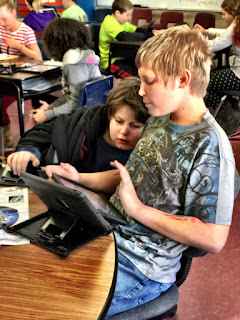 |
| 21st Century Learners |
 |
| Critical Thinking, Cooperation, Communication, Creativity |
Coming
into the course I already had an understanding of several of the tech topics we
covered. This course gave me the opportunity to practice and improve upon these
tech skills and concepts. TPACK, NETS, Web 2.0, Google products were areas of
tech which I was already familiar with.
Creating
an infographic at the start of the course was something completely new for me,
and the information about tech use by generation was very useful. Considering
the reasons for motivations was an area which was interesting and if not new,
help to remind me of why it is difficult to integrate technology. Learning
about virtual libraries was a completely new for me, having not really
understood them before.
Creating
a technology budget using different tech tools was completely eye opening, I understand
how BYOD is so attractive to educational institutions. Creating lesson plans
for before technology and then after integration with technology helped me to
see how challenging it can be to integrate technology across the curriculum. Reviewing
technology policies and creating one of my own felt like we are on the edge of
a sea change around this.
I
loved creating a technology training schedule because for most of my career, training
has be a forced march, and this exercise allowed me to have a chance to
experience planning a technology training (Meltzer, 2012).
Web
2.0 tools are familiar to me, but there are always new ones coming, and
different ways to integrate them into the classroom. Learning more about Blooms
New Taxonomy was fantastic! Aligning Ipad apps to the different levels was
particularly of interest to me (Marzano, 2007).
Continuing to develop my technology craft is paramount for my
career. Really for my pedagogy, and for my student’s experience. Teaching 21st
century skills to 21st learners is where schools have to be. Learning more in the area of
technology integration has always been up to me. Taking a leadership role in my
district is the next step. Leadership in a more formal way. I will be giving my
voice to the administration in terms of what professional development need to
be. This course has given me the foundation to understand what really needs to
be done for professional development to be successful.
Marzano, R. J., & Kendall, J. S. (2007). The new
taxonomy of educational objectives (2nd ed.). Thousand Oaks, CA:
Corwin Press.
Meltzer, Sarah T. Step-by-step Professional Development in
Technology. Larchmont, NY: Eye On Education, 2012. Print.





